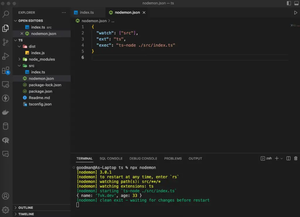Overview
Sequelize.js is a popular ORM (Object-Relational Mapping) library for Node.js, which provides a high-level abstraction for dealing with databases. It supports all kinds of database operations, and in this tutorial, we’ll explore how to use the addition and subtraction assignment operators in Sequelize.js. These operators are handy when you need to update numeric fields in your database by incrementing or decrementing their values.
We’ll start with basic examples of incrementing and decrementing values in Sequelize, then we will dive deeper into more complex scenarios, such as bulk operations and transactions. By the end of this article, you’ll be equipped to use these operators confidently in your web applications.
Getting Started with Sequelize
Before jumping into the addition and subtraction assignment operators, let’s ensure you have Sequelize set up. Install Sequelize and your chosen database driver via npm:
npm install sequelize
npm install pg pg-hstore // For PostgreSQL
npm install mysql2 // For MySQL
npm install sqlite3 // For SQLite
npm install tedious // For MS SQL Server
Next, you’ll need to configure Sequelize to connect to your database:
const Sequelize = require('sequelize');
const sequelize = new Sequelize('database', 'username', 'password', {
host: 'localhost',
dialect: 'mysql' // or 'postgres', 'sqlite', 'mssql'
});With Sequelize set up, let’s define a model that we will use in our examples:
const User = sequelize.define('user', {
username: Sequelize.STRING,
balance: Sequelize.INTEGER
});
// Sync all models with the database
sequelize.sync();Basic Addition and Subtraction in Sequelize
Addition and subtraction assignment operations are done using the increment and decrement methods provided by Sequelize instances. Here’s a simple example:
User.findByPk(1).then(user => {
return user.increment('balance', { by: 50 });
}).then(user => {
console.log(user.balance); // Increased by 50
});
To decrement a value, you would use the decrement method:
User.findByPk(1).then(user => {
return user.decrement('balance', { by: 30 });
}).then(user => {
console.log(user.balance); // Decreased by 30
});These methods also accept multiple fields, useful if you need to update several fields simultaneously:
User.findByPk(1).then(user => {
return user.increment({
balance: 50,
bonusPoints: 20
});
}).then(user => {
console.log(user.get({ plain: true })); // Shows updated balance and bonusPoints
});Advanced Usage
Sequelize also allows the increment and decrement operations to be part of a transaction, which is critical for maintaining data integrity. This ensures that if something goes wrong during the operation, you can roll back the entire transaction. Here’s an example of how to perform an increment operation within a transaction:
sequelize.transaction(t => {
return User.findByPk(1, { transaction: t })
.then(user => {
return user.increment('balance', { by: 50, transaction: t });
});
}).then(result => {
console.log('Transaction committed.');
}).catch(error => {
console.log('Transaction rolled back due to: ', error);
});Handling more complex cases, such as conditional updates or updates based on the result of other operations, involves additional Sequelize features:
User.findByPk(1)
.then(user => {
if (user.balance > 0) {
return user.decrement('balance', { by: user.balance * 0.1 }); // Decrease balance by 10%
}
})
.then(user => {
// Further operations
}).catch(error => {
// Handle error
});Conclusion
In this tutorial, we’ve covered the basics of using addition and subtraction assignment operators in Sequelize.js. We started with simple increment and decrement operations and moved on to more advanced use cases involving multiple fields and transactions. Keep in mind the importance of transactions for data integrity, especially when performing operations that alter multiple records or depend on multiple steps.
Additionally, remember that while incrementing and decrementing are simple operations, they can have significant effects on your data model’s logic. Always ensure that you are performing these operations under appropriate conditions to maintain the integrity and consistency of your data.
As you continue developing with Sequelize, you’ll find these operators to be invaluable tools in your arsenal for managing and updating numerical data efficiently. Happy coding!

